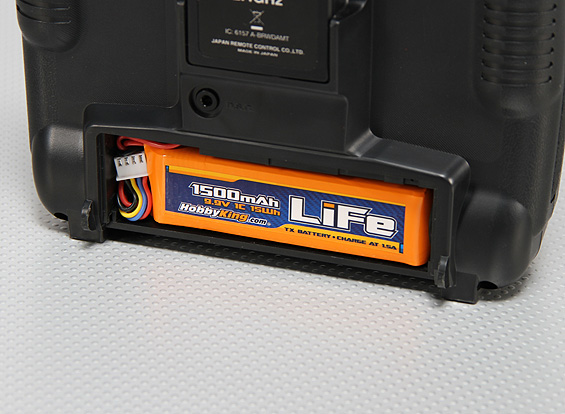How to Charge a 9.9V LiFe Battery for your Transmitter
 |
 |
Obviously these can work out fairly expensive when replacing non rechargeable batteries, and rechargeable's batteries are also far less expensive after the initial outlay, but non the less are a better option.
The other problem is space, these battery holders take up quite a bit of room in the battery compartment, and just about fit in the space provided when fitting on the cover.
An even bigger problem is battery failure due to momentary or persistent disconnection due to mechanical failure of the cells, so i always recommend throwing these away immediately and replacing with something more reliable and trustworthy !
So why not use a lipo, its compact and lighter in weight and the closest voltage for our needs would be a 3 cell Lipo, these have a combined voltage of 11.1v (with fully charged 12.6 voltage) the first thing would be the higher voltage, all this extra is lost in the circuitry and dissipated as heat, not ideal in my mind and a waist.
Disadvantages of using a LiPo
- If you forget to turn it off (we never do that, do we?) it's puffed toast.

- It voids the warranty on the TX ignored by hundreds successfully with full charge over voltage.
- You have to (should) remove to charge.
- You cannot charge with the stock jack and TX/RX type charger (less convenient).
But there are alternatives, a battery that is similar to the 3 cell Lipo ( 11.1v ) is the LiFe (pronounced LIE FEEE ) this also is a 3 cell battery but has a nominal voltage of 9.9v which is closer to the ideal voltage that modern transmitters use today, and I get about 8-10 hours use out of it before it needs to be charged again.
 |
Advantages and Disadvantages of LiFe
- It has a VERY flat discharge curve. When low you won't get much warning before it's no longer functioning.
- You can run it flat (forget to turn it off) and it 'may' be recoverable. Maybe not.
- You have to (should) remove to charge.
- You cannot charge with the stock jack and TX/RX type charger (less convenient).
How to charge a LiFe battery for you Transmitter



























